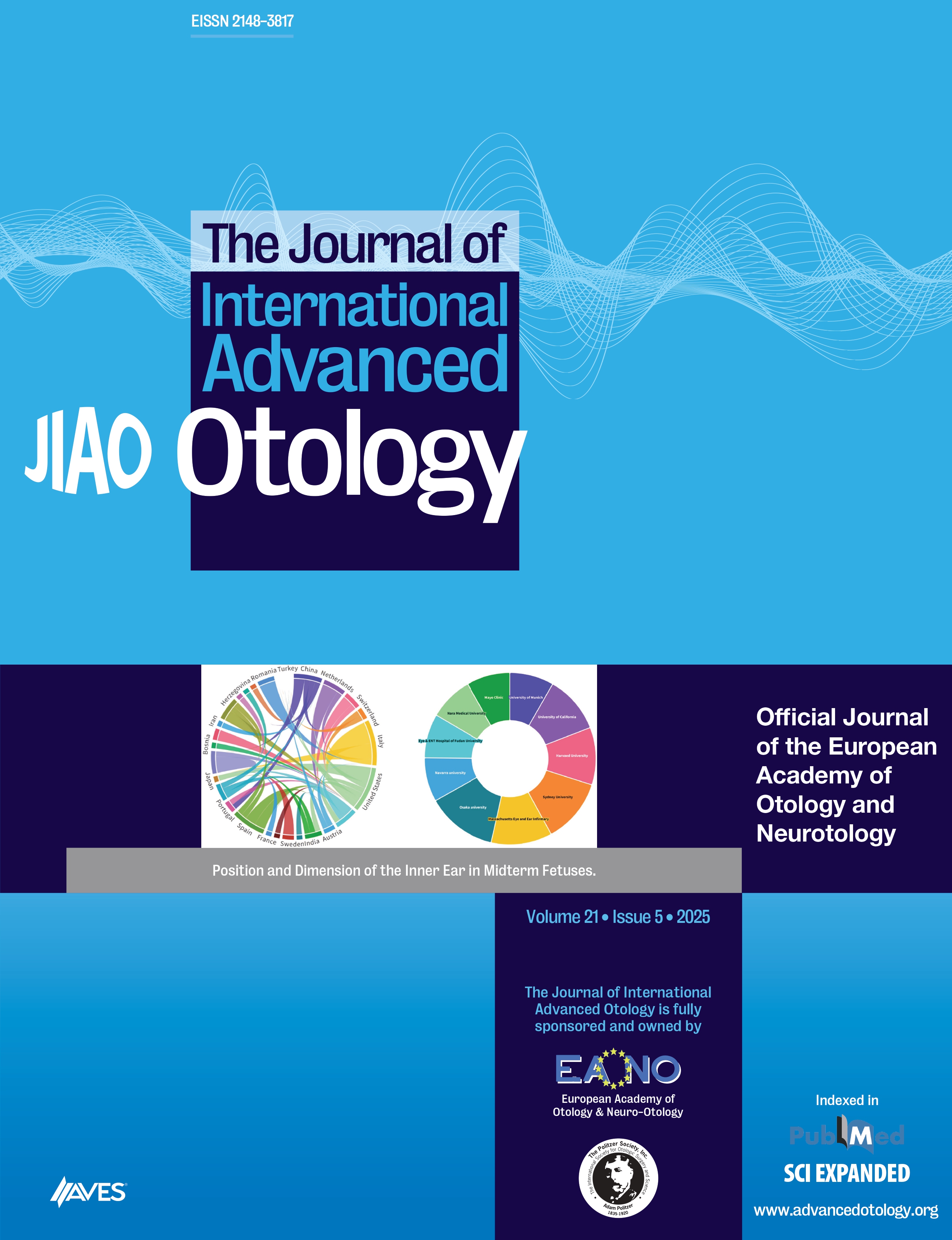Round Window Reinforcement for Semicircular Canal Dehiscence Syndrome
Main Article Content
Abstract
BACKGROUND: To evaluate the clinical outcomes and safety profile of round window reinforcement (RWR) as a minimally invasive surgical treatment for patients with semicircular canal dehiscence syndrome (SCDS).
METHODS: This retrospective case series analyzed 7 patients (mean age: 59 years) diagnosed with SCDS who underwent transcanal RWR between June 2024 and June 2025 at the Kopfzentrum Bielefeld. Inclusion criteria followed the Bárány Society consensus diagnostic standards. Clinical symptoms, audiometric findings, and vestibular test results—including Dizziness Handicap Inventory (DHI) scores—were assessed pre and postoperatively. In 2 patients, endolymphatic hydrops was diagnosed via delayed contrast-enhanced magnetic resonance imaging and monitored postoperatively.
RESULTS: All patients completed follow-up (mean: 35 months). Improvement in auditory symptoms was observed in 5 of 7 patients (71.4%), including tinnitus relief in 83.3% and hyperacusis relief in 75%. Vertigo improved in 50% of symptomatic cases. No postoperative deterioration in symptoms, DHI score, or hearing was observed. Audiometric outcomes showed a non-significant mean change in air-bone gap (±2.5 dB). No intra- or postoperative complications occurred. In patients with concomitant hydrops, auditory improvement was noted, though vertigo persisted.
CONCLUSION: Round window reinforcement appears to be a safe and effective therapeutic option for selected patients with SCDS, particularly those presenting predominantly auditory symptoms or contraindications to more invasive procedures. Further prospective studies are needed to validate these findings and define the role of RWR in the broader surgical management of third window syndromes.
Cite this article as: Sudhoff H. Round window reinforcement for semicircular canal dehiscence syndrome. J Int Adv Otol. 2025, 21(5), 2073, doi:10.5152/iao.2025.252073.


